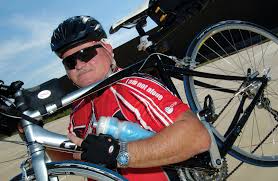Diabetes Treatment
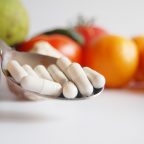
The Best Vitamins for Diabetes
Why Vitamins are Important for Diabetics
Vitamins are important to the body because they help in improving the inner workings of our entire system. For  instance, they are able to help in bone healing as well as boost our immune system. They also help in converting sugar into an energy which fuels the cells in our body.
instance, they are able to help in bone healing as well as boost our immune system. They also help in converting sugar into an energy which fuels the cells in our body.
The essential nutrients that vitamins provide are especially important in people who are suffering from diabetes. Since diabetes is associated with high glucose levels in the blood, the body will try to keep up by washing the excess out through urine. This is the reason why diabetic people frequently go to the bathroom.
Constant washing out of excess glucose may also lead to washing out of some essential nutrients in the body which in turn, affects the ability of the body to control the sugar in the bloodstream properly. In order for the body to be able to carry out its normal functions, it needs to have a steady source of essential nutrients, and this is exactly why diabetic vitamins are important.
Essential Vitamins Diabetics Need
Biotin
Studies have shown that biotin has some effect on diabetes control. This is one of the diabetic vitamins that is known to be lower in people with type 2 diabetes. People who take biotin on a regular basis have shown to have improved the activities of the enzymes, specifically glucokinase, that has an effect in regulating blood sugar levels.
Another study by Japanese researchers also found that biotin can help in repressing glucose producing genes through an insulin-signalling independent pathway.
Vitamin C
Vitamin C is another diabetic vitamin that helps in coping up with the complications that are associated with diabetes. Diabetes can cause the DNA and cells in the body to become damaged. Vitamin C, on the other hand, helps in preventing oxidative damage in the body, thereby preventing this from happening. It also helps preventing blood vessel damage.
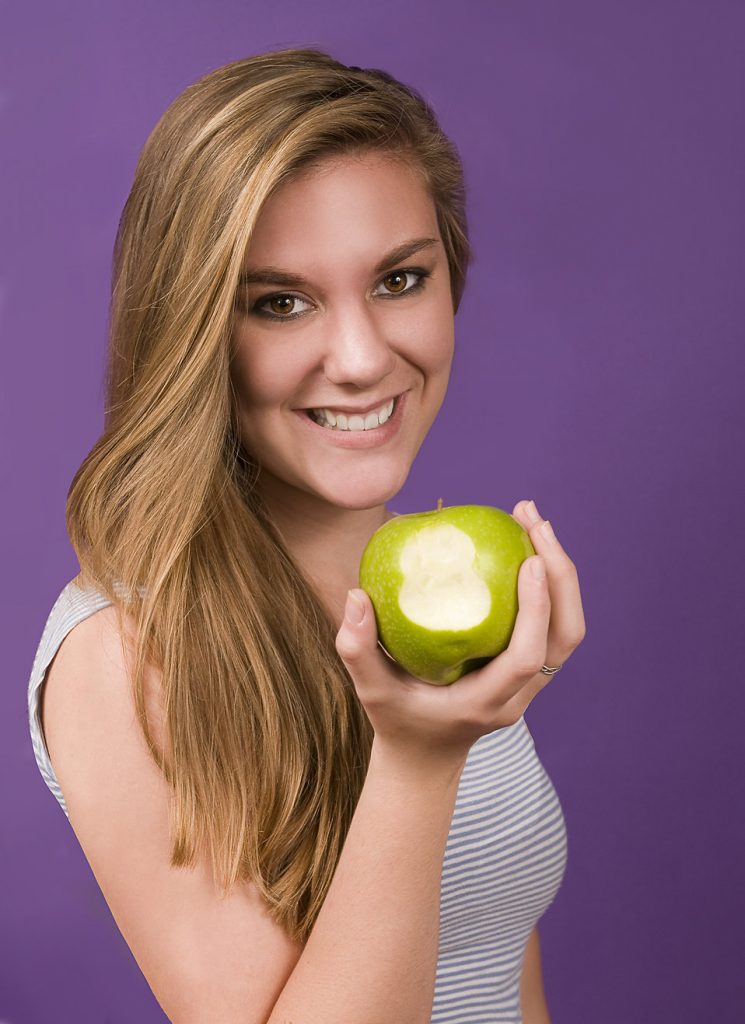 Broccoli, cauliflower, oranges, and lemons are a few sources of vitamin C. Adding these to your diet may help you get the adequate vitamin C needed.
Broccoli, cauliflower, oranges, and lemons are a few sources of vitamin C. Adding these to your diet may help you get the adequate vitamin C needed.
Vitamin D
One of the vitamins every diabetic should take is a fat soluble one. Vitamin D is one of them. Vitamin D is known to have some effect in helping decrease the risk of obesity and insulin resistance. It’s known to be produced by the body as a response to sun exposure.
Fruits and vegetables are rich sources of diabetic vitamins. Incorporating a few servings of these in your meals would help you get the vitamins you need to combat diabetes. As an alternative, Lally Naturals Blood Support Supplements can also be of help when it comes to sugar regulation and in controlling the symptoms of diabetes such as fatigue, brain fog, irritability, and other symptoms. Take it as per the directions of your medical practitioner.

5 Herbs That Help Control Your Blood Sugar
Too much of anything is bad. The same is true to sugar consumption. Too much blood glucose levels can cause  serious complications including diabetes.
serious complications including diabetes.
Diabetes is characterized by high glucose levels in the blood. It can happen if the person produces inadequate amounts of insulin; the body fails to respond properly to insulin, or both. If a person develops diabetes, you may need to monitor your blood sugar level frequently, everyday.
A study has shown that 14% of the people in the United States are diagnosed with diabetes while 38% were reported to be in the pre-diabetes stage. These numbers constitute to 50% of the country’s total population. This is why it is important for people to start being health-conscious so as to prevent these numbers from rising.
Effective Herbs for Diabetes
The smartest way to prevent your blood glucose from exceeding normal levels is to change your lifestyle by eating healthier and by adding regular exercise to your everyday routine. Furthermore, some plants such as cinnamon, guggul, and others are known to be effective herbs for diabetes control. Let’s look more into the details.
- Cinnamon is known to be an effective herb that can aid in healing diseases. One of these is diabetes. Researchers have found out that cinnamon lessened the blood sugar levels by 24%. It contains antioxidants that help relieve oxidative stress which has been known to have a role in the development of type 2 diabetes.
- Guggul. Widely known for their ability to heal diseases, guggul has also been known to help relieve symptoms that are associated with both types of diabetes. It plays an important role in the metabolism of lipid and glucose.
- Banaba trees are widely known for its health benefits especially because of its ability to help in the treatment of diabetes. The ability of banaba to help in the regulation of blood sugar may be because of its active

- ingredient, corosolic acid, that helps in the regulation of the body’s glucose and insulin levels.
- Other than its ability to fight inflammations in the body, cayenne also has the ability to help fight diabetes. In fact according to a Hungarian study, cayenne pepper aids in the absorption of glucose in the intestine.
- Gymnema Sylvestre. One of the many benefits of gymnema sylvestre is its ability to utilize glucose and prevent the liver from releasing more insulin into the bloodstream. Moreover, it has also been known to help in restoring the pancreas’ beta cells thereby making it one of the most effective herbs for diabetes.
Adding a little bit of these herbs to your meals would be ideal if you are looking to maintain your blood sugar levels to normal. There are, however, other ways which you may be able to consume these herbs. Lally Naturals Blood Sugar Support Supplements can help you obtain all these herbs in just one pill. The 20 herbs that are blended uniquely helps in maintaining the normal level of glucose in the blood stream.
What is Hyperglycemia?
Natural Blood Sugar Supplements. Hyperglycemia is the increased glucose level or sugar in our blood. The food we ate are broken down into glucose which are carried into our blood to all the cells in our body and are converted into energy with the help of insulin hormone produced by our pancreas. Insulin helps move glucose into the cells.  The body at times stop producing insulin as in the case for type 1 diabetes or the insulin produced does not work properly as in the case of type 2 diabetes. When glucose stay in the blood and is not carried into the cells of the body, this result in development of high blood sugar levels. Uncontrolled high sugar level may lead to dehydration and more serious complications may develop.
The body at times stop producing insulin as in the case for type 1 diabetes or the insulin produced does not work properly as in the case of type 2 diabetes. When glucose stay in the blood and is not carried into the cells of the body, this result in development of high blood sugar levels. Uncontrolled high sugar level may lead to dehydration and more serious complications may develop.
Diabetes mellitus
Diabetes mellitus causes high blood sugar or hyperglycemia. Hyperglycemia maybe caused by too much intake of carbohydrates which the body of a diabetic person is unable to convert into energy fast enough and so resulting to high blood sugar levels.
Another cause of hyperglycemia is when insulin production is not controlled either thru injection or taking medicines for insulin production. Diabetic people has to balance diet, medication and physical activity to prevent increased blood sugar levels.
Other possible causes of hyperglycemia or high blood sugar levels are stress, no exercise or minimal exercise, illness, surgery or infections and certain drugs like steroids can also affect blood sugar levels..
Common symptoms of hyperglycemia includes dry mouth, thirst, frequent urination and night urination, dry and itchy skin, blurry vision, weight loss, increased appetite and fatigue or drowsiness.
If hyperglycemia persists for hours and dehydration results, other symptoms include difficulty in breathing, rapid weight loss, dizziness when standing, increased confusion and drowsiness and even unconsciousness or coma.
Home remedies or self-care
Home remedies or self-care for hyperglycemia or high blood sugar is regular check of blood glucose meter if it is higher than normal. Regular meals and scheduled medication should be observed. Sugar-free and caffeine-free liquids must only be taken. In addition, check your urine for ketones and take blood sugar readings until it is back to normal.
 Ways to lower blood sugar level includes regular exercise, dietary regime solely for diabetics should be followed, and Natural Blood Sugar Supplements recommended by your doctor.
Ways to lower blood sugar level includes regular exercise, dietary regime solely for diabetics should be followed, and Natural Blood Sugar Supplements recommended by your doctor.
When hyperglycemia persists for more than three days or when ketones appear in your urine, you should immediately call your doctor to prevent complications.
Diabetics should follow their recommended dietary regimes, check their blood sugar regularly, do the recommended exercise daily and take the medicines as prescribed. A planned daily activities with a planned diet and Natural Blood Sugar Supplements will balance and manage blood sugar levels.
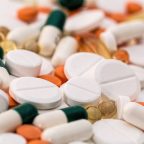
Vitamins Good for Diabetics
Vitamins for Diabetics. Vitamins or Vital Amino Acid are the nutrients our body need to maintain the proper functions of metabolism and immunity. Vitamins are vital because the body cannot manage itself without the help of these vitamins. These vitamins are acquired from outside sources like food and supplements. One major function of  vitamins is for proper blood sugar control.
vitamins is for proper blood sugar control.
Diabetics are found to lose more vitamins than retaining them like when they frequently urinate. Washing out excess sugar when glucose are high in the blood also washes out water-soluble nutrients. Losing vitamins can worsen the ability of the body to stabilize blood sugar. It is therefore advisable to eat varied diet rich in natural vitamins.
Two Kinds of Vitamins
Water Soluble Vitamins. Water soluble vitamins cannot be stored in our body. After the body takes what it needs from food, it excretes the remaining excess as waste. Water soluble vitamins are Vitamins B1, B2, B3, B6, B12, C, Biotin, and Folate. Since diabetics tries to get rid of extra sugar from their body, they lose more water-soluble vitamins more than others. It is recommended therefore, that diabetics take these vitamins in larger than normal doses.
Fat Soluble Vitamins. Fat soluble vitamins are Vitamins A, D, E and K. These vitamins are stored in our fat cells for longer period than the water-soluble vitamins.
Diabetics needs to increase their intake of the appropriate vitamins to help their body to use insulin and thus stabilizing their blood sugar levels.
Six Vitamins That Are Best Supplements For Diabetics
Multivitamins. Multivitamins and mineral supplements significantly reduces infections and sickness in diabetic persons. Taking high quality multivitamins also reduces the risk of diabetes.
Vitamin B3. Niacin or Vitamin B3 have shown to help lower blood sugar, reduce fatty liver and prevent neuropathy.
 Vitamin B6 and B12. Kidney damage cause by diabetes is said to have been reduced with the help of vitamin B6 and B12. It also improved arterial health of diabetics.
Vitamin B6 and B12. Kidney damage cause by diabetes is said to have been reduced with the help of vitamin B6 and B12. It also improved arterial health of diabetics.
Vitamin C. diabetics are said to have low concentration of Vitamin C. Vitamin C is said to improve the widening of the arteries and thereby allowing sufficient flow of blood for patients with non-insulin-dependent diabetes mellitus.
Vitamin E. Vitamin E is a fat-soluble antioxidant. It improves glucose control and protects blood vessels from the damaged caused by diabetes.
Vitamins should be taken with food for the easy absorption of the nutrients into the body. It is best to follow a healthy diabetes diet together with a regular exercise with the best vitamin supplement to achieve stability in blood sugar level.

Gymnema Sylvestre and Diabetes
Diabetes is a disease that affects metabolism. It is characterized by high blood sugar level brought about by inadequate insulin or the incorrect use of insulin or both.
Gymnema sylvetre from Africa, Australia, and Central and South India is a climbing woody shrub that is known in ancient times as “destroyer of sugar”. The leaves of Gymnena sylvestre contains a substance which known to inhibit the body’s ability to taste sweetness and ability to absorb sugar in the intestine. . Our ability to taste sweetness is said to stop or is affected upon chewing on the leaves of gymnena sylvestre.
Gymnema Sylvestre and Diabetes
Gymnena has been used to help lower blood sugar, lower LDL cholesterol, helps reduce amount of sugar absorbed by the intestines, stimulate insulin in the pancreas. It is used to treat liver disease, water retention and stomach problems. Its effectiveness is said to be due to its ability to increase insulin secretion which in turn helps lower blood sugar levels.
Although gymnema sylvestre is a herb that is normally safe to use and it appearing that there is no known drug interactions concerning gymnema, it is still very crucial to inform your doctor when and if you decide to use it to treat diabetes. Blood sugar level should be constantly monitored to prevent the possibility of lowering the sugar in dangerous level. It is not advisable for breast feeding women, pregnant and women who plans to get pregnant to use  gymnema. And to avoid possible complications of negative reactions, gymnema should not be taken two weeks before having surgery. when taking anti-diabetic medications like aspirin, monitor intake of gymnema because aspirin lowers blood sugar and my lead to hypoglycemia.
gymnema. And to avoid possible complications of negative reactions, gymnema should not be taken two weeks before having surgery. when taking anti-diabetic medications like aspirin, monitor intake of gymnema because aspirin lowers blood sugar and my lead to hypoglycemia.
Treatment of diabetes involves control of blood glucose levels and preventing eventuality of complications. Diet will be altered to regulate intake of carbohydrate and other important nutrients. Medications will be used to control blood sugar and insulin injection or insulin pump will be also given. Regular exercise and other physical activities will also be recommended to improve health and reduce the risk of complications like heart disease.
Gymnema is used in the form of pill or tablets and may also be consumed in the form of leaf extract or powder. Adding this to your diabetic diet may help suppress sugar and carb cravings. This will help in controlling your blood sugar levels and aid in managing weight control by suppressing such cravings.
Taking supplements may help counter the side effects of other prescribed anti-diabetic drugs, it is still advisable to undergo a healthy dietary regime and daily exercise.
Gymnema Sylvestre and Diabetes
Control Diabetes
According to the American Diabetes Association (ADA), more than 29 million Americans have been diagnosed with diabetes. In addition, it’s estimated that diabetes goes undetected in almost one of four Americans. As diabetes continues to remain one of the top leading causes of death in the United Sates, the ADA estimates that the total cost of diabetes in the United States stands at$245 billion, which means one in five healthcare dollars is spent treating diabetes and its complications.
top leading causes of death in the United Sates, the ADA estimates that the total cost of diabetes in the United States stands at$245 billion, which means one in five healthcare dollars is spent treating diabetes and its complications.
Furthermore, the ADA reports that another 86 million people have been diagnosed with pre-diabetes, which means that they have higher than average levels of blood sugar. Without testing, people do not know they have this condition. If left untreated or ignored, many individuals with pre-diabetes will develop diabetes (usually type 2).
Just 5% of body weight loss could take obese a long way to fight type 2 diabetes and coronary heart disease. Acting on this insignificant proportion could play significant role in lives of people suffering from obesity. This is a new finding by researchers from Washington University School of Medicine in St. Louis, Missouri.
Control Diabetes
Earlier, it was suggested to reduce body weight by about 5 to 10% for good health. But now, the experts recommend something else. “Five percent is really a very reasonable goal for most obese patients to achieve, it’s much easier than 10%”, said senior author Dr. Samuel Klein of Washington University School of Medicine in St. Louis, Missouri.
For the study, the researchers put 40 participants on goals to either reduce their body weight by 5, 10 or 15%, or to stay at their current body weight. There were 19 participants, out of 20, to be able to achieve the target of 5% w
eight loss. Some of them even reduced more than that. The average weight of participants was about 106 kg, which was reduc
ed to 100.8 kg after achieving the target of 5%.
The results of the tests disclosed the facts that people who targeted 5% of their body weight were able to reduce overall fat mass. In those people, there was improvement in function of the insulin-producing beta cells in the pancreas. Improvement was also seen in sensitivity of their liver and muscle to the effects of the hormone insulin. Reduction in weight by more than 5% could improve these functions even more, as per the study.
Gestational Diabetes Menu
Gestational Diabetes Menu -Creating a gestational diabetes menu can be quite easy, provided you follow the guidelines discussed below.
TAKE ON A DIFFERENT PERSPECTIVE WHEN LOOKING AT FOOD
This includes looking at foods according to different categories.
For example:
PROTEIN
- Red meat, such as beef, mutton and pork
- Poultry, including duck and turkey
- Legumes/ lentils and nuts
- Beans, including baked, butter, kidney, and soya
- Eggs and cheese
CARBOHYDRATES
- Starches, including bread, cereals, corn, grains, macaroni, noodles, pasta, potatoes, rice, and spaghetti
- Vegetables, such as green beans, lettuce, and sweet potatoes
- Fruit, including apples, kiwis, oranges, peaches, and plums
- Dairy products, such as milk
FATS
- Skin of poultry
- Nuts
- Avocados
- Dairy products, including butter, cheese, and milk
FIBER
- All fruits and vegetables
- Grains
- Nuts
Since it’s simply not possible to include every food that falls in the categories, it’s important to learn how to read labels to prevent any confusion. Then, use this information to plan your gestational diabetes menu.
VALUABLE TIPS
- The appropriate balance of carbohydrates, fats, and protein is crucial. You should split carbohydrates into fruit and dairy, starch, and vegetables.
- Determine the food’s value based on the most common ingredient. For example, nuts are a source of fats, fiber, and protein, yet its main source is protein. As a result, if you are in need of protein, nuts are a good option. However, if you are in need of fiber, nuts shouldn’t be your first choice.
- Although avocados are a fruit, your gestational diabetes menu should consider them a fat.
- Anytime you eat carbs, also have protein. Keep in mind that the combo of carbs and proteins will naturally add fat to your diet, meaning it can be easy to get too much. Be sure to limit the amount of fat in your diet.
GESTATIONAL DIABETES MENU SHOPPING LIST
When you are pregnant and struggling with gestational diabetes, it’s always a good idea to do your grocery shopping ahead of time.
To do this, prepare a list of meals a week ahead of time and complete your grocery list accordingly. When at the store, this will help you avoid “bad” foods, such as candy and tortilla chips.
When writing out your lists, divide it into nutrition groups, including dairy, fruits and supplements, proteins, starch, and vegetables. Be sure to note the total grams of carbs and portion sizes you will need.
WHAT TO BUY AND WHAT TO CONSIDER
When grocery shopping, get into the habit of reading labels for the ingredients, portion size, and total carbs and fiber. Here’s what to buy and what to look for.
PROTEINS
- Turkey
- Cottage cheese
- Tofu
- All kinds of nuts
- Fish, preferably ocean caught
- Eggs; keep in mind that 1 large egg replaces 1 oz. of meat.
- Peanut butter, either smooth or chunky. Look for sugarless if possible.
- Opt for skinless chicken or remove the skin at home.
- Choose lean beef, mutton, and pork. If this isn’t available, cut off the fat yourself
- DAIRY
- Yogurt, specifically sugar free, plain
- Low-fat or skim milk
- If you don’t consume milk or yogurt daily, take a calcium supplement, such as Coral Calcium.
VEGETABLES
- Either fresh or frozen will do. Opt for a variety of colors, while keeping in mind that colorful vegetables have more nutrients.
FRUITS
- Choose either fresh or frozen fruit with no added sugar.
- If you purchase canned food, opt for versions without added sugar. Be sure to drain the juice before eating the fruit.
- For convenience, purchase fruit in portioned sizes.
SNACKS
- Each snack should have 15 grams of carbohydrates per portion size.
Good options include:
- Plain cookies
- Vanilla wafers
- Graham crackers
- Ginger snaps
FINAL THOUGHTS
Be aware that the information provided above is meant to be an educational aid only and should not be used in lieu of medical advice by a licensed provider.![]()
![]()
![]()
![]()
![]()
![]()
Low Blood Sugar Symptoms
Low blood sugar symptoms – If you suffer from hypoglycemia, which is commonly referred to as low blood sugar, then you know that this can be a very serious issue.
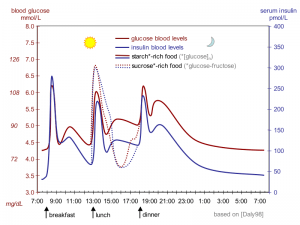 Usually, people who have diabetes is more at risk to develop hypoglycemia.
Usually, people who have diabetes is more at risk to develop hypoglycemia.
Typically, medicines that a diabetic takes will higher the levels of insulin found in their body.
Too much of a medication, not eating enough, or having less food then you should eat or a longer workout than normal can cause your blood sugar to be low especially in diabetics.
Another name for blood sugar is glucose. Glucose is actually found in foods and is fuels your body with energy.
Carbs are the main substance in the making of glucose in your body, which could be found in foods like rice, bread, tortillas, potatoes, veggies, milk and sometimes fruits and cereals.
When you finish eating glucose is actually drawn into the bloodstream and makes its way into the cells inside your body.
Insulin, which is found being made inside your pancreas, works with your cells to use glucose to make your energy.
When more glucose is in your body than needed it will be sent to your liver or muscles or even change into a fat so energy can be stored for later on.
The normal functions that your body needs to run may not work or even be started correctly if you do not receive enough glucose in your body.
If you are not taking a medicine that will increase the amount of insulin in your body this is because you do not need the medicine because your body already produces plenty enough glucose to withhold and keep your sugar levels where they should be and when you do happen to need more glucose to be made your liver can even help with that process.
Sometimes, when you are on specific medications because you do need help with your glucose and insulin levels if you realize you have a lower level blood sugar then normal this can be dangerous and can cause many different issues.
Whenever you see the level of your sugar drop anywhere to 70 mg/dl or further below you need to seek professional health care help immediately so you can stop any other problems from arising.
Below are a few symptoms you can exhibit from having low blood sugar:
- Blurred vision
- Fast heartbeat
- Mood swings
- Being nervous
- Fatigue without explanation
- Very pale color to your skin
- Headaches
- Constant hunger
- Shaking
- Dizzy spells
- Profuse sweating
- Insomnia
- A tingling feeling in your skin
- Loss of concentration, thoughts jumbled
- Having a Seizure, coma or losing consciousness
There are a few other things that could cause your sugar levels to drop.
 Many people seem to think your glucose levels will only drop if you are diabetic and that is not true at all.
Many people seem to think your glucose levels will only drop if you are diabetic and that is not true at all.
Some other issues that can point to having low blood sugar are as followed:
There are some medicines that can lower your glucose levels. One example that causes your blood sugar to drop is quinine.
Certain medical conditions like hepatitis or even kidney disorders can lower your glucose level.
Tumors have been known to also lower your sugar levels.
If you have endocrine disorders like adrenal glad deficiency you may notice a decrease in your glucose levels also.
People who have hypoglycemic unawareness will not know that they actually have decreasing glucose levels.
So anyone with this specific condition needs to monitor their sugar levels because in an instant without your knowledge or you knowing your glucose levels can drop which can cause you to faint, have seizures, or slip into a coma if you do not seek treatment ahead of time.
When your blood sugar gets too low you could be in a lot of trouble this is definitely an emergency that would need to be handled by medical professionals.
If you know a person who is diabetic and they are having symptoms ranging from mild to moderate, then you need to make sure you get them to eat something that has at least 15 grams of carbs and that can be digested relatively.
Some easy some foods for this include:
- Half a cup of juice or soda pop
- Some saltines (4 or 5)
- Spoonful of honey
- A few pieces of hard candy or a glucose tablet
- If nothing else is available, a tablespoon of sugar
If you notice someone has a bad reaction and is not conscious you need to give that person glucagon and call 911 as fast as possible. However, do not ever give someone medicine orally if they are not with it and are passed out because you could accidentally choke them.
When they are not treated many symptoms will only get worse.
You need to make an appointment with your doctor if you are diabetic and you see that your glucose levels are drastically dropping very frequently or if you can any of the symptoms which have been spoken of above even if you do not have diabetes if you have any of these symptoms you should seek medical advice also.![]()
![]()
![]()
![]()
![]()
![]()
Diabetic Ketoacidosis
Diabetic Ketoacidosis (DKA) is a condition-affecting individual with diabetes and it can be very serious. When a diabetic’s body is unable to utilize glucose, i.e. sugar, as a source of fuel due to a lack of insulin or the presence of none at all, DKA can occur. At that point the body starts burning fat for fuel instead of glucose and the poisonous ketone chemicals start building up in the blood and urine.
Symptoms of Diabetic Ketoacidosis include:
- Decrease in alertness
- Face flushing

- Dry mouth and skin
- Rapid deep breathing
- Breath that smells fruity
- Frequent thirst or urination lasting one day or more
- Stomach pains
- Nausea
- Vomiting
- Headaches
- Muscle aching or stiffness
In some cases, Diabetic Ketoacidosis can be the first sign that undiagnosed diabetics receive, but it could also occur in an individual who has already received a diabetes diagnosis. In addition, there are a number of circumstances that could cause DKA in type 1 diabetics, as well as in type 2 diabetics although less often, including:
- Surgery
- Injury
- Infection
- Serious illness
- Missed insulin dosage
Generally, ketone testing of a blood or urine sample is utilized when DKA is suspected and then the measurement of beta-hydroxybutyrate in the blood if there are ketones in the urine.
Additional DKA tests that are available include:
- Blood pressure
- Blood glucose
- Basic metabolic panel
- Arterial blood gas
If left untreated, Diabetic Ketoacidosis can result in kidney failure, cerebral edema or cardiac arrest. Any one of these conditions could lead to death, so it’s critical that you call 911 or head for the ER if you or a diabetic loved one experiences symptoms, including fruity breath, difficulty breathing, a decrease in consciousness, nausea or vomiting.
Most patients who have diabetes are advised by their doctor about identifying the Diabetic Ketoacidosis warning signs by using a glucose meter or urine strips. If you perform one of these tests and find ketones, it’s important to call your health care provider immediately and then be sure that you’re following all of the instructions that you receive. The majority of patients are found to be responding in 24 hours or less, although in some cases, recovery could take longer.
If you are diabetic, learning how to recognize the symptoms of Diabetic Ketoacidosis is crucial to your health and well being. And, insulin pump users should check regularly to ensure that your insulin flows through your tubing and that it isn’t disconnected kinked or otherwise blocked.![]()
![]()
![]()
![]()
![]()
![]()
Stem Cell Diabetes Treatment
Stem cell diabetes treatment is a rapidly growing field that holds many promises for treating both child and adult diabetes.
What Are Stem Cells?
Stems cells, which are biological cells, are found in all multi-cellular organisms. These cells can divide and differentiate into cell types that are specialized. Stem cells are able to renew and produce additional similar cells.
Humans have two types of stem cells:
Embryonic Stem Cells – which come from embryonic cells.
Adult Stem Cells – which are found in bone marrow, fat cells, and blood.
History of Stem Cell Therapy
The term “stem cell” was first proposed for scientific use by Alexander Maksimov in 1908.
Stem cell therapy has been around for over 25 years, starting with bone marrow and umbilical-cord blood stem cells to treat patients with cancer, spinal cord injuries, heart damage and neurological disorders. This rapidly developing field requires the skills of cell biologists, geneticists, physicists and many other dedicated professionals to move forward.
The first confirmed reversal of autoimmune-caused Type 1 diabetes in an animal experiment was reported in 2009 by Yong Zhao and his colleagues.
The safety and positive results of stem cell therapy have now been proven in over 1500 clinical trials in the United States and all over the world.
Stem Cell Treatment Advantages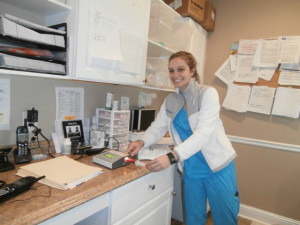
- Uses the latest technologies
- Same day outpatient treatment (usually 5 – 8 hours)
- Uses a patient’s own stem cells
- Local or no anesthesia is needed
- There are very limited side effects
- Has a higher potential for regeneration of nerves, tissues and organs
- Higher age groups are candidates for treatment
Stem Cell Treatment Steps
- 10 -20 ml of blood is collected from an upper limb.
- Fat collection is carried out from the lower stomach or buttocks (a mini-liposuction technique is employed). About 60 ml is needed.
- Lipoaspirate is used to isolate the stem cells.
- The blood is placed in a centrifuge and spun, separating the blood components. This will result in Platelet Rich Plasma (PRP), which are platelets, which include growth factors.
- The stem cells are placed in a specialized machine, which activates the cells by using three light frequencies simultaneously.
- The activated stem cells are now given via an intravenous drip (IV) to the patient.
Where to Get Stem Cell Treatment
There are now more clinics and treatment centers that offer Stem Cell Treatment for Diabetes. In addition, many Naturopathic Physicians now offer this treatment option as an outpatient service.
Here is an interview (2 parts) with Naturopathic Physician Dr. Hank Sloan of The Genesis Center in Cumming, GA. He discusses stem cell treatment and applications.
